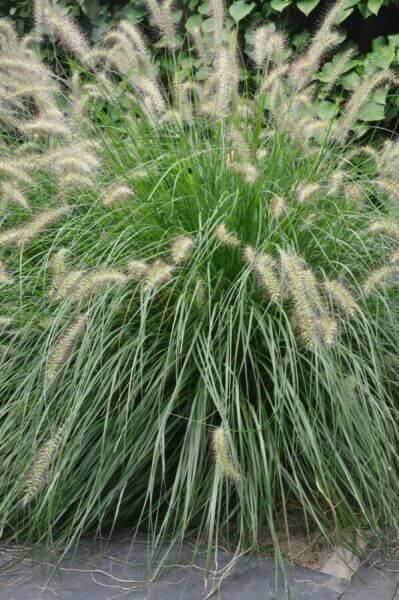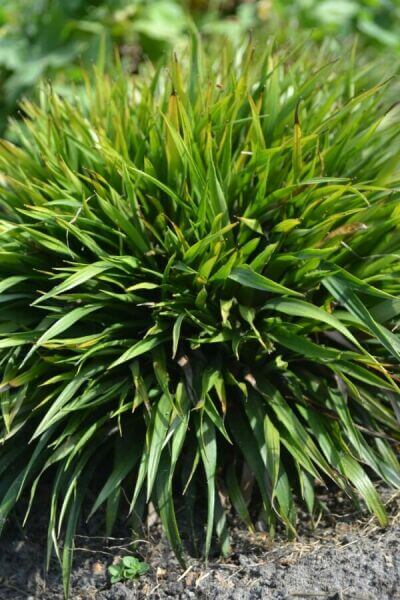Best Hedge Plants For Privacy
Enhance your garden's allure with lavish hedge varieties such as Yew (Taxus), Thuja, Laurel, Photinia, and Bamboo, commemorated for their structural integrity and environmental advantages.
Yew and Thuja provide evergreen coverage and winter season resilience, while Laurel provides rapid growth and broad, aromatic leaves.
Photinia includes seasonal charm with its dynamic red foliage, and Bamboo provides a low-maintenance, serene atmosphere.
These hedges enhance air quality, lower noise, and produce tranquil, personal spaces.
Proper planting, spacing, and upkeep make sure energetic growth and environmental consistency.
Explore how these rich ranges can raise your garden's appeal and well-being.
Key Takeaways
Change Your Garden With Lush Hedge Ranges
- Select Yew for its thick, evergreen growth and unrivaled durability.
- Select Laurel for its fast development and broad leaves, making sure fast privacy.
- Choose Photinia for its vibrant seasonal foliage, which turns a striking dark red.
- Use Bamboo for a low-maintenance, winter-hardy hedge with visual appeal.
- Area plants 2-3 per meter and prune frequently for optimal growth and health.
Popular Hedge Plants
When transforming a garden with rich hedge varieties, it's important to think about popular hedge plants such as Yew, Thuja, Laurel, and Photinia due to their special attributes and advantages.
Yew (Taxus) is extremely respected for its durability and thick, green development, making it a prime option for withstanding landscapes.
Thuja is kept in mind for its evergreen foliage and robust winter durability.
Photinia adds seasonal vibrancy with red leaves that darken in time, producing dynamic visual appeal.
Laurel offers rapid development and aromatic, broad leaves, suitable for quick privacy.
Furthermore, Bamboo is an outstanding choice for ambiance, offering a low-maintenance, winter-hardy alternative that boosts the garden's aesthetic with its stylish, swaying canes.
These selections deal with a range of horticultural needs and preferences.
Advantages of Garden Hedges
Garden hedges provide a wide range of benefits, making them an important addition to any landscape. These natural barriers are economical to execute and provide significant wind defense, improving air circulation and adding to noise decrease. The thick foliage of hedges like Thuja and Beech ensures personal privacy by obstructing visibility, creating a tranquil and remote environment.
Hedges also play a crucial function in microclimate guideline, providing a steady environment that promotes plant development and lessens temperature fluctuations. Their complex leaf structures filter contaminants, enhancing air quality and contributing to a healthier garden ecosystem.
Additionally, hedges master sound reduction, taking in and deflecting acoustic waves to lower ambient noise levels. This double functionality of supplying both visual and acoustic privacy improves the overall serenity and visual appeal of any garden.
Planting and Maintenance Tips
For an effective hedge, careful preparation of the planting area is important. Ensure the soil has proper pH and drain to support strong root development.
Area the plants appropriately for the chosen types. Water the hedge regularly during its preliminary growth phase, changing as required with seasonal changes.
Execute a organized pest control and disease avoidance method, utilizing organic or chemical treatments when essential. Regularly examine for aphids, termites, and fungal infections.
Apply mulch to retain moisture and reduce weeds. Seasonal pruning promotes thick growth and air circulation, important for plant health.
Following these standards will assist you cultivate a lively, properly maintained hedge that enhances the beauty of your garden.
Spacing and Trimming Guidelines
Spacing and Trimming Guidelines
Proper spacing and cutting are crucial for cultivating healthy, visually appealing hedges. Sufficient spacing guarantees each plant gets enough nutrients, light, and air flow.
Follow these standards for optimum hedge upkeep:
- Spacing: Position hedge plants 2-3 plants per meter to motivate robust development.
- Pruning Strategies: Routine pruning is essential for keeping desired hedge height and shape. Trim brand-new growth in summertime and cut back older wood during winter.
- Seasonal Care: Change cutting techniques and schedules according to seasonal requirements to guarantee plant health.
- Hedge Height: Regularly monitor and cut to keep the wanted hedge height and accomplish uniform aesthetic appeals.
Complying with these actions will guarantee your hedge grows, boosting both the appeal and performance of your garden.
Selecting the Right Hedge
Choosing the Right Hedge
Picking the suitable hedge involves examining elements such as mature height, foliage density, and environmental resilience. Successful hedge plant selection needs understanding each species' development qualities and site-specific adaptability.
For instance, Yew (Taxus) offers exceptional durability and dense development, while Thuja is noteworthy for its winter durability. Additionally, thinking about maintenance requirements is important; fast-growing species like Laurel or Privet need regular cutting, whereas low-maintenance options like Bamboo or Ivy may be more suitable for those looking for minimal maintenance.
Environmental elements such as soil type, light availability, and moisture conditions need to also direct the choice process. This mindful method ensures the selected hedges will grow, providing both visual and functional benefits to the garden landscape.
Delivery and Planting Advice
To guarantee your hedge plants thrive, they must be provided by specialized couriers and planted quickly upon arrival.
Follow these necessary steps for effective planting:
- Soil Preparation: Enrich the soil with organic matter to improve drain and nutrient material.
- Planting Depth: Produce a trench two times the width and equivalent to the depth of the root ball.
- Watering Strategies: Water thoroughly after planting, keeping the soil consistently damp however not filled.
- Mulching: Use a layer of mulch to retain moisture and suppress weeds.
Client Assistance and Service
Offered the vital role of timely assistance in horticultural pursuits, our client assistance group is readily available 6 days a week through telephone, e-mail, and social media to offer professional recommendations and promptly resolve any concerns. Their commitment to quick reaction times ensures customer fulfillment by solving questions associated with plant health, ideal planting techniques, and maintenance schedules.

----------------------
Telephone
Within 48 hours
This thorough assistance system, reinforced by an excellent 9.3/ 10 consumer ranking, highlights our commitment to enhancing the gardening experience for every client.
Often Asked Concerns
The Length Of Time Does It Consider Hedge Plants to Develop?
Hedge plants usually need one to 3 years to end up being totally developed, with the specific period differing by types and growing conditions.
Reliable care throughout this vital duration is vital for robust development. Consistent watering, watchful weed control, and appropriate fertilizer application are pivotal in promoting strong root development.
For instance, fast-growing types like Laurel might develop more rapidly, while slower-growing varieties such as Yew might take longer. Diligent maintenance accelerates the facility procedure, leading to dense and healthy hedges.
What Are the very best Hedge Plants for Personal Privacy?
The question of the very best hedge plants for personal privacy includes evaluating evergreen and deciduous alternatives.
Evergreen hedges like Thuja, Laurel, and Cypress supply year-round coverage, ensuring constant privacy.
In contrast, deciduous hedges such as Beech use seasonal personal privacy, shedding leaves in chillier months.
Key upkeep tips for privacy hedges consist of regular trimming, fertilizing in spring, Additional info and correct spacing-- generally 2 to 3 plants per meter.
Additionally, constant watering and persistent weed elimination are important for promoting healthy, dense development.
Can Hedge Plants Bring In Wildlife to My Garden?
Yes, hedge plants can draw in wildlife to your garden by providing necessary benefits like shelter, food, and nesting websites, consequently enhancing regional biodiversity. For example, yew, holly, and laurel are exceptional for drawing in birds, while ivy supports a range of bugs.
Nevertheless, it is very important to keep in mind that there are some drawbacks, such as increased upkeep to handle pests and regular maintenance. Carefully choosing and maintaining hedge varieties can assist balance these benefits and drawbacks, ultimately cultivating a sustainable and lively ecosystem in your garden.
Are There Any Blooming Hedge Plants Available?
Yes, there are flowering hedge plants available that can enhance the charm of your garden.
For example, Elaeagnus, also called Olive Willow, produces aromatic white flowers in the fall, adding a touch of beauty.
Photinia, another popular option, showcases lively red leaves that mature into a rich green, producing a vibrant visual result throughout the seasons.
To make sure these plants grow, it's necessary to practice appropriate pruning strategies and seasonal upkeep, such as cutting brand-new growth in the summertime and cutting down in the winter season.
These measures will help keep the health and visual appeal of your flowering hedges.
How Do I Prevent Insects in My Hedge Plants?
To avoid insects in hedge plants, use natural bug control approaches and keep proper hedge care. Introduce advantageous pests like ladybugs, which victimize damaging bugs, to develop a well balanced ecosystem.
Regularly inspect your hedges for indications of problem and quickly eliminate any affected parts to prevent the spread. Ensure the health of your hedges by using well balanced fertilizers and supplying appropriate water.
Use mulching to keep soil moisture and appropriate spacing to decrease plant stress and promote robust growth. These practices jointly assist in lessening insect problems and maintaining a healthy hedge.
Conclusion
In essence, choosing the ideal hedge ranges such as Yew, Thuja, and Laurel can transform any garden into a tranquil sanctuary. These plants supply year-round greenery, enhance visual appeal, and deal practical advantages like sound reduction and wind security.
Proper planting strategies, precise spacing, consistent watering, and seasonal cutting are crucial for ideal growth.
Reputable delivery services and skilled client support make sure a seamless experience from purchase to planting, making it simpler than ever to raise your outdoor area.
Garden hedges offer a plethora of benefits, making them an important addition to any landscape. These natural barriers are economical to implement and supply significant wind defense, enhancing air blood circulation and contributing to noise decrease. The dense foliage of hedges like Thuja and Beech guarantees privacy by obstructing presence, creating a remote and tranquil environment.

Pruning Techniques: Routine pruning is necessary for preserving desired hedge height and shape. Cut brand-new growth in summer season and cut back older wood throughout winter.
Comments on “Hedge Plants For Natural Landscapes”